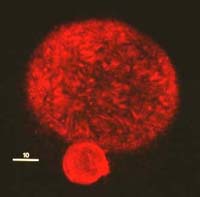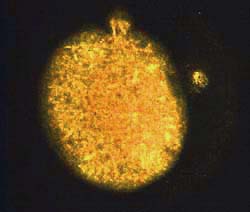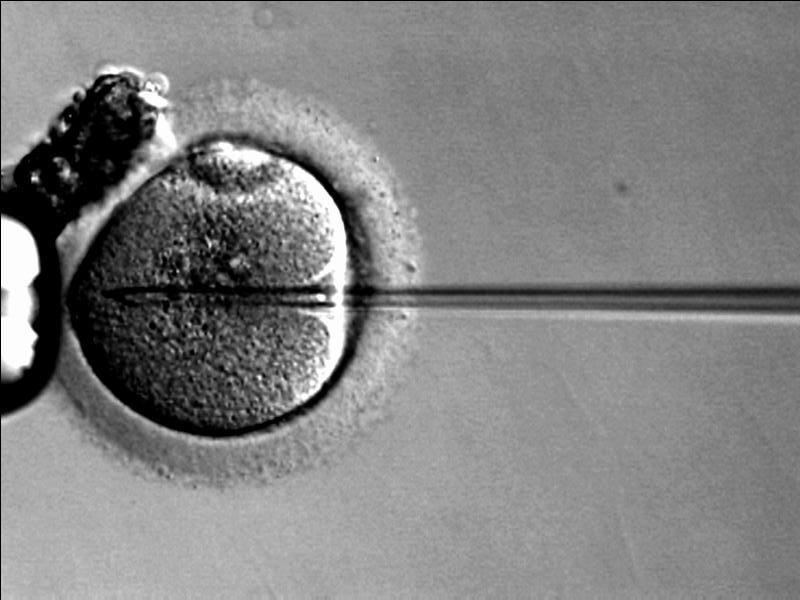
Photographer: ASU Research Magazine and Dr. Ian Gallicano
show/hide words to know
An unfertilized egg stained with a dye that appears red in a fluorescence microscope. It shows the large egg and the small first polar body at the bottom. The small line indicating size is 10 micrometers long = 1/100 of a millimeter. The egg is about 100 micrometers in diameter, so about ten eggs would fit side to side on a pencil line.
McGaughey (pronounced McGoy) is a researcher at Arizona State University who studies reproduction of mammals. He is a consultant at a hospital, where he is part of a team that implants fertilized eggs into the uterus of women who have not been able to conceive a baby by other methods.
He has a mini lab in the operating room. He takes the eggs the surgeons have removed from the patient and sorts through them to find "the best" -- the most mature and the most likely to take to fertilization. Then he cleans the eggs by removing layers of cells that coat them, mixes them with sperm from the patient's husband and takes the mixture to the surgical table. Then the doctors put the egg-and-sperm mixture back into the patient. The people in the photos in McGaughey's office are ones who had this operation.
An egg that was stained with a dye that appears yellow in a fluorescence microscope. It shows the egg and the first polar body on the right side. At the top, the small second polar body is just forming.
For information on embryology go to The Virtual Embryo(link is external) at the University of Calgary.
View Citation

Eggs can be fertilized with a very tiny needle.
Be Part of
Ask A Biologist
By volunteering, or simply sending us feedback on the site. Scientists, teachers, writers, illustrators, and translators are all important to the program. If you are interested in helping with the website we have a Volunteers page to get the process started.






